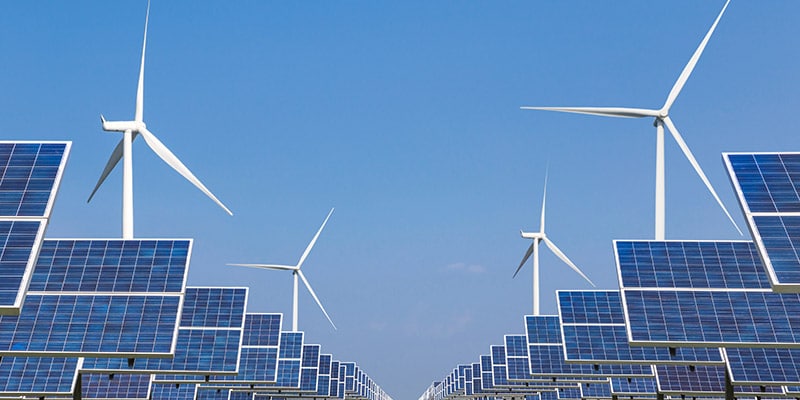Speaking on the occasion of the publication by the European Commission of the Fourth Report on the State of the Energy Union, Commissioner Miguel Arias Cañete declared that the Energy Union is now finally “completed”.
The Energy Union is the EU strategy aiming at achieving the energy transition. The strategy is based on 5 pillars: Security, Internal Energy Market, Energy Efficiency, Decarbonisation and Research and innovation. In order to implement this strategy, the Commission launched in 2015 a set of eight regulations and directives called the Clean Energy for All Europeans Package or the Clean Energy Package. The goal of this package was for the EU to take control of its energy transition and to take leadership in clean energy on the global scene. Nearly five years after this massive project started, it is now finally completed. Between April and November 2018, all eight regulations and directives have been adopted, providing the EU with “the world’s most ambitious and advanced climate and energy framework” according to Commissioner Cañete.
Quick overview of the adopted texts and objectives:
- The recast Directive on the energy performance of buildings (the EPBD) requires Member States to provide a roadmap towards a carbon neutral construction sector by 2050. The act also contains measures that will accelerate the rate of building renovation and develop buildings that are compatible with new technologies and smart ways for consumers to manage their energy consumption.
- The recast Directive on the promotion of renewable energy sources sets the objective of having 32% of renewable energies in the European mix by 2030. The act also includes measures modernising the renewables support schemes and providing a framework for electricity self-consumption.
- The revised Energy Efficiency Directive sets the EU’s 2030 energy efficiency target at 32.5%, which will require Member States to increase their energy savings by 0.8% annually.
- The Governance of the Energy Union Regulation defines the framework under which Member States and the Commission will collaborate in order to achieve the objectives set by the Energy Union. The act notably requires Member States to provide national plans on energy efficiency and climate protection for the 2021-2030 period. The act also defines a process for progress monitoring.
- The revised Common rules for the internal electricity market Directive sets a framework allowing consumers to take an active role in the energy transition by giving them tools for a more efficient and flexible management of their energy consumption. The act notably facilitates access to smart meters and dynamic pricing and makes it possible for citizens to create energy communities.
- The revised Internal Market for Electricity Regulation harmonises the internal electricity market rules. The regulation notably defines the conditions for the use of capacity mechanisms and for priority dispatch for renewables. The act also creates Regional Coordination Centres to facilitate transborder cooperation.
- The Risk-preparedness in the electricity sector Regulation updates the network codes in order to better anticipate crisis situations and to facilitate cooperation between electricity transmission operators. The regulation reinforces the role of stakeholders, represented by the association ENTSO-E, in risk management. It also requires Member States to present updated risk-preparedness plans every four years.
- The Regulation on New rules for the Agency for the Cooperation of Energy Regulators (ACER) reinforces the role of the Agency in managing the European energy market. The act makes it possible for ACER to provide opinions and recommendations to new organisations (ENTSO-E, EU-DSO et ENTSO-G) and requires Member States to reevaluate the level of human and financial resources allocated to ACER.
It is now up to Member States and to France to make it happen
With four of the eight acts taking the form of directives, it is now the responsibility of Member States to implement the adopted measures. And the Commission is not entirely satisfied with the progress that has been made so far: although the EU as a whole is on track to achieve 20% of renewables in its energy mix by 2020, the Commission’s report highlights that some Member States are struggling to achieve their individual targets. The Commission warns that these struggles could lead progress to stagnate after 2020, which would make it more difficult to hit the 2030 target. As for the 2020 energy efficiency target, set at 20%, the Commission is not more optimistic: the EU is currently at 17% and the possibility that it could miss its 2020 target is very real.
France is no exception: it is among the seven countries pointed at by the Commission (with Belgium, Ireland, the Netherlands, Poland and Slovenia) because they are currently below their indicative trajectory from the Renewable Energy Directive for the 2017-2018 period. The Commission recommends that France as well as the other Member States identified should make renewed efforts on energy efficiency and renewables development. In this perspective, the Commission suggests France should consider the possibility of using statistical transfers as provided for in the Renewable Energy Directive in order to get its trajectory back on track. Now that the Government has presented its National Low-Carbon Strategy (SNBC), which aims at reaching carbon neutrality by 2050, it is imperative that all the necessary measures are taken to translate its ambitions into reality.







